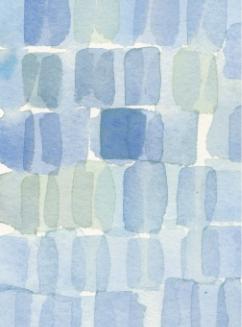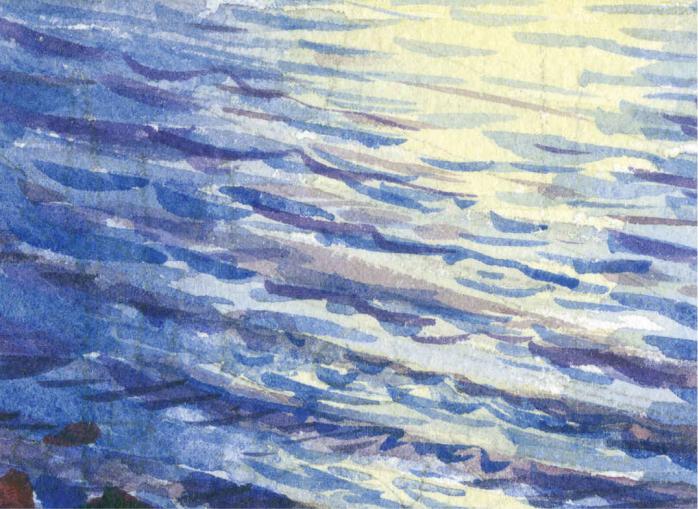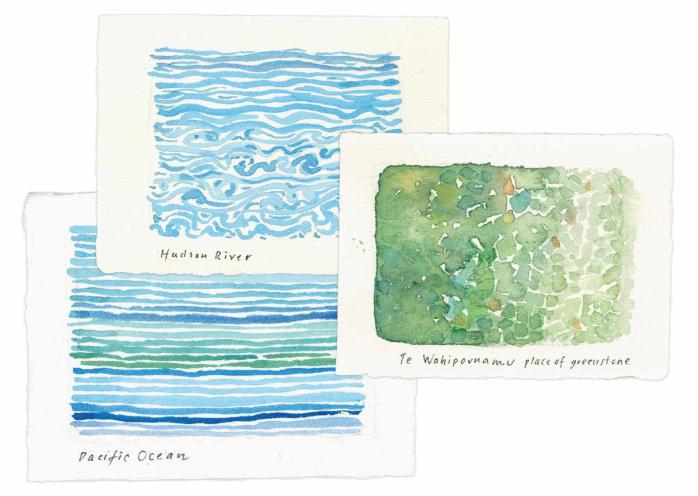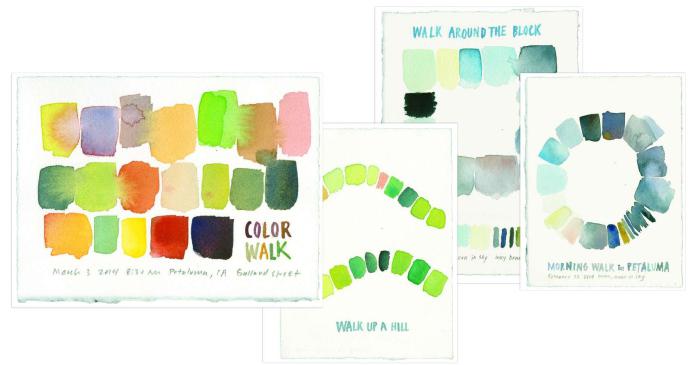
- •Acknowledgments
- •Introduction
- •Landscape
- •Ocean/Sky
- •Light
- •Wildflowers
- •Fog, Mist, and Haze
- •Forest, Lichen, and Moss
- •The Colors of Point Reyes National Seashore
- •Materials
- •Essential Equipment
- •Optional Equipment
- •Preparation
- •Paper Size & Grid
- •Pigments & Color Theory
- •Technique
- •Brush Marks
- •Painting
- •A Note on the Photographs
- •Habitat
- •Light
- •Weather
- •Seasons
- •Seasons: A Year in Color
- •Antigua, Guatemala
- •Lake Atitlán, Guatemala
- •Pátzcuaro, Mexico
- •Luxor, Egypt
- •The Dead Sea, Jordan
- •Petra, Jordan
- •Lake Issyk-Kul, Kyrgyzstan
- •Newport, Pennsylvania
- •Barney’s Joy, Massachusetts
- •Sacred Valley, Peru
- •Dominica, West Indies
- •Isle of Skye, Scotland
- •Inverness, Scotland
- •Mitchell, Oregon
- •New York, New York
- •San Francisco, California
- •Portland, Oregon
- •Big Picture
- •Detail
- •Sky Patch
- •Terrain
- •Rocks
- •Water
- •Color Walk
- •Color Memory
- •Naming Colors
- •Color Mixing
- •Primary and Secondary Colors
- •Tertiary Colors
- •Analogous Colors
- •Complementary Colors
- •Value or Tone
- •Color Temperature
- •How Many Greens are there?

WATER
Water invites us to quiet our minds. Whether it be an ocean, river, fountain, or pond, water can be mesmerizing. Notice how many forms water takes, from streams to rivers, ocean to mist, fog to rain. Capturing the endless color variations can keep an artist busy for a lifetime.
Watercolors are a natural medium for painting water. They speak for themselves: pigment suspended in water. Use big brushes and lots of water and move color and water across the page.


Try using bands of color to give the feeling of the shape of waves.
PRACTICE
•Sit next to some water, or look at the rain, a pond, a puddle, a glass of water, a drop of dew. What colors do you see? Lay down one band of color, let it set for a moment, then add another color. Or work wet on wet.
•Note the big color relationships between water and sky. Try making two brushstrokes that capture the sky and water. On a foggy day the horizon and the water merge. In late afternoon the horizon line might be a dark band of ultramarine blue.
•Look at the colors in a pond or a puddle. What’s in it, around it, reflected in it, including the sky?
•Try painting the colors of waves, exploring rhythm and movement. Water always moves, and so should your brush. Create some play between fast and slow strokes. Don’t worry about getting it right—let your brush move with the water. Start by mixing the colors that you see, and make lines of color that reflect the moving water. Keep your brushstrokes loose to express the quality of things that are alive, moving, and flowing.

COLOR WALK
Go out with the intention of looking only at color. Clear your mind and focus only on the colors in your immediate surroundings. Soon, your walk will become a parade of color. As you move along, you become a collection of color in motion.
PRACTICE
•Bring a small notebook to jot down what you see along the way. Record the date, place, time, and season. Assign a word or phrase to each thing whose color you notice—you will come back to these later.
•When you return from your walk, open to the notes in your notebook, and take out your paints. Use the words as a prompt to start mixing your colors, and see what you remember.
•Your first impressions are usually the best, so go with them. For another dimension, paint the shape of your walk—around a city block, down a rambling path—as you put down the colors. From that, make a palette.
•If you do the same walk throughout the seasons, your palettes and notes will record the shift of colors altered by light and weather.
